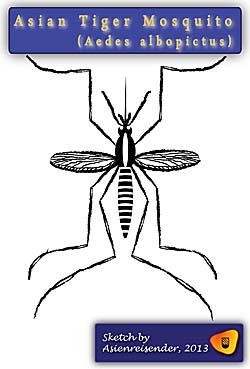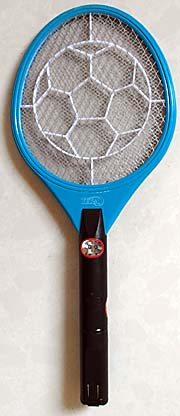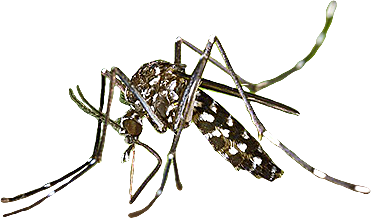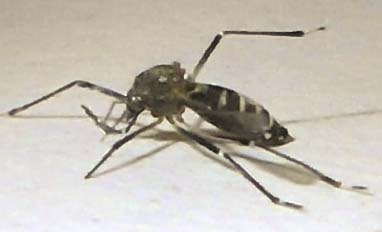1.
Chikungunya
Chikungunya fever is another tropical, mosquito-born disease. It's endemic in Southeast Asia, India and great parts of Africa.

The Asian tiger mosquito is one of several vectors for chikungunya.
Chikungunya is a virus which was discovered in 1953, first documented in Thailand in 1958. Most of the population in Indochina is probably immune against the disease. Though, tourists and travellers from other world regions are usually not immune. The disease is spreading out to the southern parts of Southeast Asia. In the last years there were considerable numbers of cases of chikungunya in Indonesia, Malaysia, the Philippines, Burma/Myanmar, Cambodia and Thailand, certainly also in Singapore. Between 2001 and 2003 there was a chikungunya epidemy on Java. In May 2009 there was an outbreak in Trang / Thailand, in 2012 in parts of Cambodia with 1,500 reported cases. Chikungunya appeared the first time in Cambodia in 1961.
Chikungunya is transfered by various kinds of mosquitoes, including the aggressive Asian tiger mosquito (Stegomyia albopicta, or aedes albopictus), which transferes dengue fever and a number of other diseases as well. Other vectors of the chikungunya virus are primates and rodents.
Recently a virus mutation happened, which is particularly well transfered by the Asian tiger mosquito. It's pathogenicity is higher than those of the other, older variations.
The outspread of the Asian tiger mosquito in the last years, also into south Europe, is supposed to be responsible for the chikungunya epidemy in summer 2007 in Ravenna, Italy. Possibly the disease will spread out into more regions in Europe and north America in the next years.


